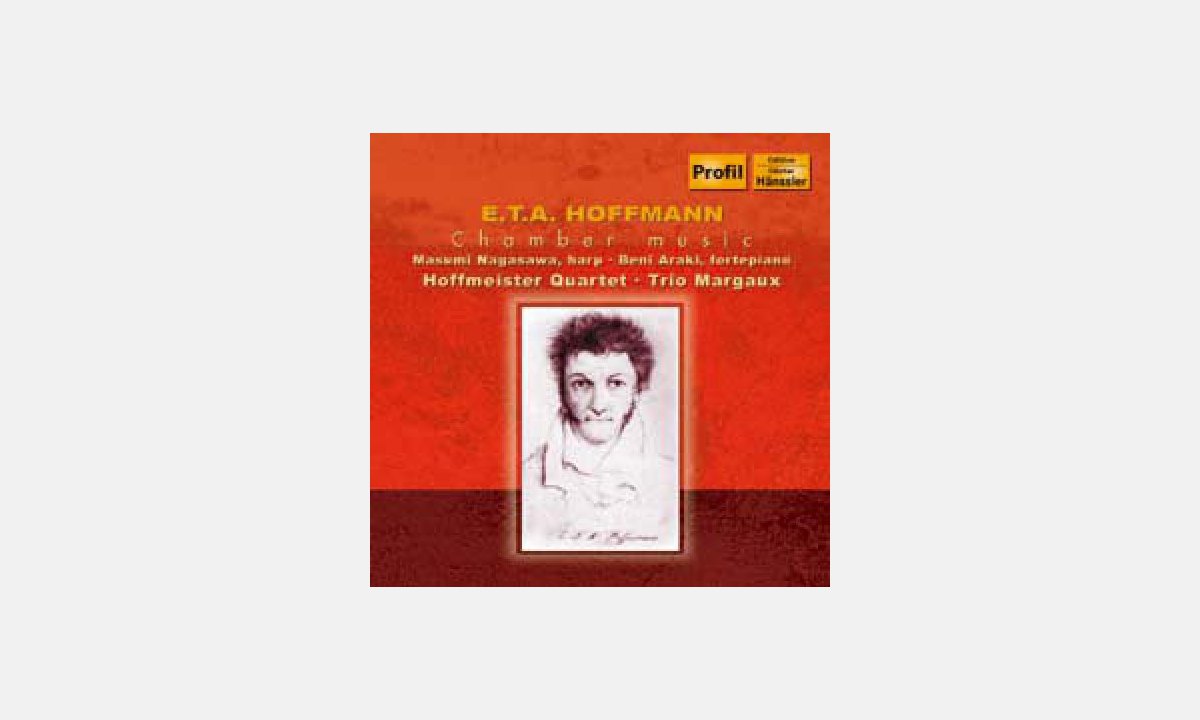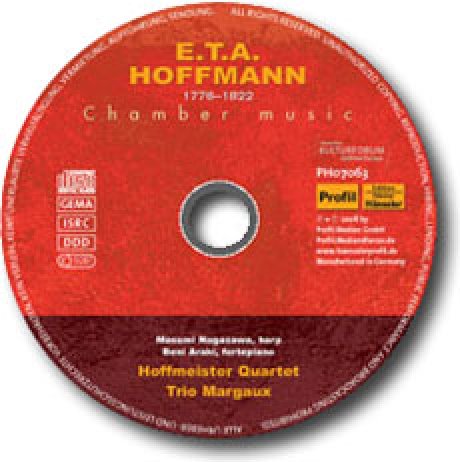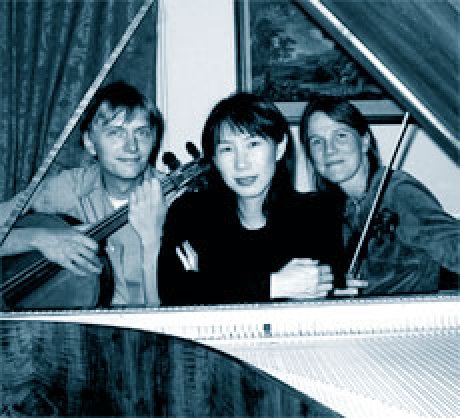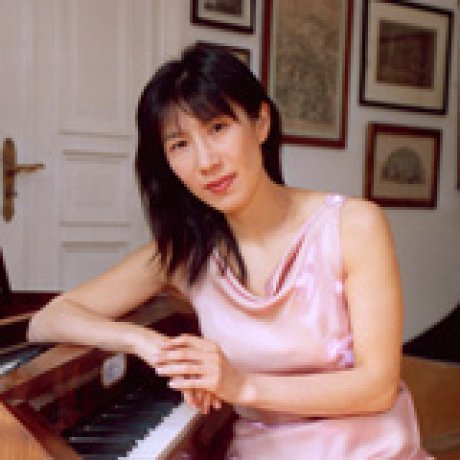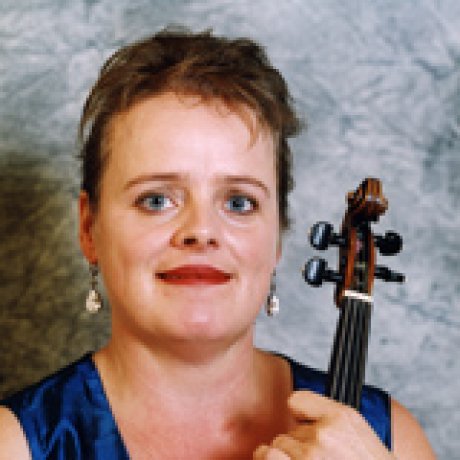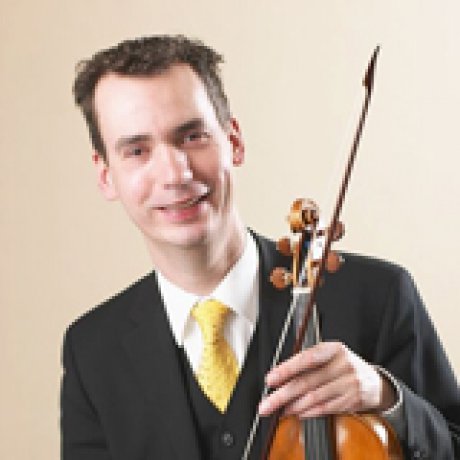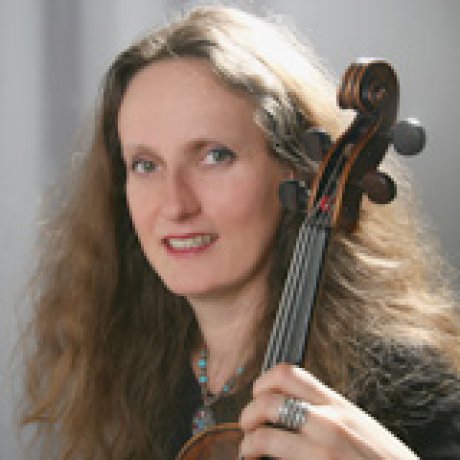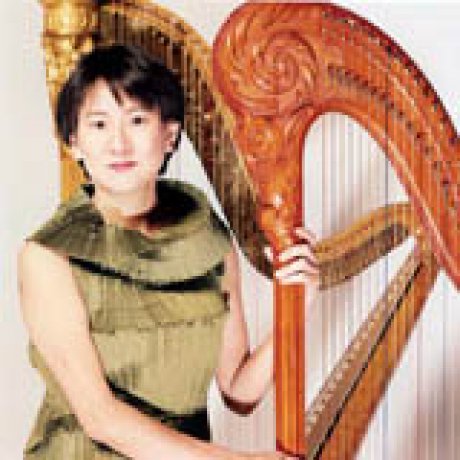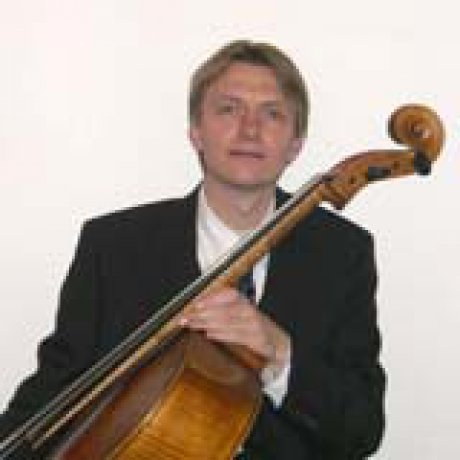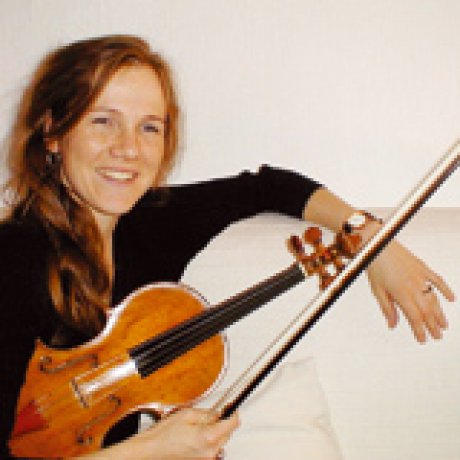
Musicians: Masumi Nagasawa (harp) and the Hoffmeister Quartett and Beni Araki (fortepiano) and the Trio Margaux
Für Informationen in deutscher Sprache klicken Sie bitte auf die Flagge.
Ernst Theodor Wilhelm Hoffmann was born in 1776 in Königsberg, where he grew up with his maternal family Dörffer after his parents’ early separation. Despite his predestination to become a lawyer as per his family’s tradition, he demonstrated as a young boy a strong affinity towards the fine arts, including music, the visual arts and literature. And while he actually did pursue a remarkable career as a respected lawyer, we know him today as the man who penned literary classics, as the author of the novels tomcat murr and the devil's elixir and numerous stories. However, Hoffmann’s success in writing began relatively late in his years spent in Bamberg from 1808–1813. Aside from his day job as a lawyer, Hoffmann found his actual artistic fulfillment in music. His recognition as a composer remained elusive during his life-time, despite a few significant successes, especially his wonderful opera undine in Berlin 1816. As a competent writer on the subject of music, Hoffmann did have a lasting impact on the development of music criticism. For example, his reviews on Beethoven’s instrumental music (the Fifth Symphony and the Piano Trios op. 70) are some of the major milestones in musicological literature.
Hoffmann had his first piano lesson in Königsberg with his uncle Otto Wilhelm Dörffer as the teacher. His other teachers included cantor Otto Christian Gladau as well as Carl Gottlieb Richter. However, his fundamental knowledge of compositional technique was conveyed to him by the organist at the cathedral in Königsberg, Christian Wilhelm Podbielski (1740–1809). This musician taught Hoffmann the craft of composing, which at that time mainly consisted of basso continuo (harmonics) and counterpoint. At the same time, he took drawing lessons. During his time spent studying law at the Königsberg University Hoffmann also intensely pursued music, composing, drawing and writing. The musical compositions (rondos and songs) and literary works (two novels) from that time are of course now lost, since Hoffmann was very critical of his artistic endeavors. The following years provided him with more musical challenges.
In Glogau (Lower Silesia), where Hoffmann lived from 1796–1798, he most likely had vocal lessons from his aunt, Sophie Dörffer. In Berlin, he honed his composing skills from 1798–1800 with Johann Friedrich Reichardt. Here, Hoffmann also composed his first musical comedy, the mask, for his own libretto. After time spent in Poznań and Płock, Hoffmann finally went as a councilor to Warsaw in 1804, where he also found the time to play an important part in the musical scene within civil society in addition to his official duties. He made significant contributions in the founding of the Musikalische Gesellschaft zu Warschau, whose statutes were communicated to the musical public by Leipzig’s allgemeine musikalische zeitung in October 1805. In the concerts given regularly by that society, Hoffmann made a name for himself as a director of music and was also able to have some of his own compositions performed.
As a result of Prussia’s defeat by Napoleon at the start of 1807, Hoffmann was forced to give up his post and aspired to find a new appointment in Berlin. However, by then Berlin was brimming with unemployed civil servants, and Hoffmann had to try to use his musical abilities to earn a living. He sent his compositions to various publishing houses and advertised his services in a newspaper as a director of music. Finally, he was appointed a musical director in Bamberg, where, despite his many failures and difficulties at the theater, he lived until 1813 and found his calling in literature.
The pieces of chamber music published on this CD were composed in his productive period from 1804–1809, when Hoffmann still sought his artistic fulfillment mainly as a composer.
Harp quintet in C minor (AV 24)
We have no information on the evolutionary history of this quintet for harp, two violins, viola and violoncello. Probably, Hoffmann composed it in Warsaw, where he most certainly had the opportunity to hear it performed within the Musikalische Gesellschaft.
From Hoffmann’s letter of October 27, 1807 to the music publisher Ambrosius Kühnel in Leipzig, we can gather that Hoffmann's friend Hitzig submitted this harp quintet to the Leipzig publishing house for publication. Kühnel felt this piece was too difficult to be profitable to the publishing house. Hoffmann responded by indicating the harp part could not only be played on the pianoforte, but the piece also has »a very pleasing effect« in the instrumentation with piano. Thus, in the manuscript the title of the piece includes the description »Quintet for Harp or Fortepiano …« On March 15, 1808, Hoffmann sent the quintet to the music publisher Nägeli in Zurich. Alas, this was also to no avail. In 1846, the manuscript along Hoffmann’s remaining musical oeuvre was in the Königliche Bibliothek zu Berlin and is now located in the Staatsbibliothek Preußischer Kulturbesitz.
The first movement entitled Allegro moderato, already has many typical characteristics of Hoffmann’s compositional style. The eight-bar theme consisting of two contrasting parts is presented in the exposition several times in different variations. Hoffmann also plays the two contrasting motifs off against each other as a counterpoint. The thematic material is already worked through so deeply in the exposition that the short development after a few harmonious tangents (after E flat minor, F minor, F major) leads to the reprise. The songlike, slow middle movement in A flat major clearly illustrates Hoffmann’s sense for the romantic tonal potential of the harp. The last movement, an allegro in 6/8 time, gives the harpist the chance to demonstrate his or her virtuosity in spirited sixteenth notes alternating with the strings.
Piano sonata in A major (AV 22)
The piano sonata in A major is the only instrumental piece by Hoffmann that was published during his lifetime. It appeared in 1805 published by Joseph Anton Franz Elsner in Breslau within the polish wybór pięknych dziel muzycznych i pieśni polskich (Collection of Beautiful Music and Polish Songs). Elsner (1769–1854), who as the Director of the Warsaw Conservatorium later instructed Frédéric Chopin and the Polish folk song researcher Oskar Kolberg, was engaged as the director of music at the Warsaw National Theater during Hoffmann’s time. Hoffmann had previously met him in Poznań and deepened this acquaintance in Warsaw in 1804. Despite this early printing, the sonata was soon forgotten and was next published again in 1967 when the Hoffmann researcher Friedrich Schnapp rediscovered Elsner’s long lost collection.
The sonata with three movements models the classical sonata form. The first movement, an elegant andante with playful figures in thirty-second notes, represents a proper sonata movement. The second movement is a minuet in D major, with a B major middle part inserted (Minuetto II). The fastpaced last movement, entitled Allegro assai, is in turn a sonata movement, in which the second theme – with its downward triads in the development – is used for extensive harmonious modulations.
Piano sonata in F minor (AV 27)
The piano sonata in F minor was most likely also composed in Warsaw. In his letter dated October 27, 1807, Hoffmann sent the music publisher Ambrosius Kühnel in Leipzig, who had just rejected the harp quintet, a list of his instrumental and vocal compositions. This included six piano sonatas that good musicians enjoyed playing, Hoffmann reported. Regarding the sonatas (including the sonata in F minor) he indicated that they were set in an older style, and mostly consist in an introduzzione in a slow tempo and a subsequent allegro with counterpoints. On March 15, 1808, he sent Nägeli the sonata together with an additional sonata and the harp quintet. Apparently, Nägeli wanted to print a total of three sonatas. A note to that effect appeared in the allgemeinen musikalischen zeitung (№ 37 from June 9, 1808). In May of 1809, Hoffmann negotiated with the publisher, but that printing never occurred. The manuscript is now located in the Staatsbibliothek Preußischer Kulturbesitz in Berlin.
On the one hand, Hoffmann ties in this sonata into the later style of his idol, Mozart, who increasingly united the »old style« with classical vocalizations in refined contrapuntal finesses. On the other hand, the expressive emotionalism of the sonata points to Beethoven, Hoffmann’s admired contemporary. The sonata begins with a dramatic adagio, followed seamlessly by a chromatic allegro fugue. After an imperfect cadence in C major comes a larghetto in A flat major, in which a simple theme is varied in a fascinating manner. The fugue is resumed seamlessly and with it the sonata ends impressively.
Grand Trio in E major (AV 52)
The piano trio in E major may be considered the zenith of Hoffmann’s chamber music compositions. The evolutionary history of this piece, which Hoffmann wrote in Bamberg in August 1809, can be reconstructed from his letters and diaries.
When Hoffmann went to Bamberg in the fall of 1808, it soon became apparent that he could not prevail against the concertmaster in this matter. He confined himself to writing music for plays and other occasional compositions for the theater and supplemented his small salary with vocal and piano lessons. At the same time, he began to work with the allgemeine musikalische zeitung in Leipzig, which printed not only reviews of new musical publications, but also printed his musical novella chevalier gluck. An important source of income for Hoffmann was also selling musical supplies. Hoffman’s students and the city’s music lovers purchased from him sheet music, which he sold on commission from the publisher Breitkopf and Härtel in Leipzig (where the allgemeine musikalische zeitung also was published). In this period, Hoffmann also tried to make some profit from pieces of chamber music. Since he did not own a piano, he offered Breitkopf and Härtel to sell pianos on commission in addition to the sheet music. On July 31, he received a grand piano, and on the following days he worked intensively on a trio in E major, which Hoffmann indicated in his diary. At the end of August 1809, he was able to submit the finished trio to the publisher Nägeli in Zurich for publication.
He was proud of his composition, but also sensed that it did not fit the needs of the publisher, who was looking for simpler and catchy music for families to play. Like the harp quintet and the piano sonatas, which he submitted to various publishers, this trio was not printed and was long forgotten.
the musicians
Beni Araki, Beni Araki, fortepiano, studied harpsichord in Tokyo and with Jos van Immerseel in Antwerp. She completed master classes with Gustav Leonhardt and the organist Luigi Tagliavini. She has been living in Berlin since 1993. As a soloist, she has performed with orchestras such as Anima Eterna (Belgium) and Concerto Brandenburg (Berlin), and she collaborates regularly with various ensembles for old music as well as with the Ensemble Oriol and the Kammerakademie Potsdam. She is a soughtafter chamber musician and teaches at the Universität der Künste in Berlin. As of 2004, she has been a member of Trio Margaux. Beni Araki plays a reproduction crafted by Robert Brown of a Michael Rosenberger fortepiano (Vienna, about 1800).
Ursula Bundies, violin, has been working as violinist in numerous baroque ensembles since 1984. She is a long-time member of the Musica Alta Ripa, Cantus Cölln and concertmaster for many baroque orchestras, including Das kleine Konzert, Stuttgarter Barockorchester, Collegium Carthusianum and La Banda. She plays with partners such as Christine Schornsheim, Rainer Oster and Carsten Lohff. For her recording of the violin concert in A minor from J. S. Bach, she received the Cannes Classical Award. She has been a member of the Hoffmeister Quartet since 2002. She plays an instrument made by Camillo Camilli (Mantua 1743).
Christoph Heidemann, violin, was concertmaster of the Junge Deutsche Philharmonie before he devoted himself to early music and to playing historical instruments. In 1992, he established the baroque orchestra L’Arco Hannover, which he has been leading ever since as the concertmaster. He has also been active in ensembles such as the Hannoversche Hofkapelle and La Ricordanza, of which numerous CD recordings are also available. He has been a member of the Hoffmeister Quartet since 2002. He plays the reproduction of an instrument by Giuseppe Guarneri (Cremona 1742), which was crafted by Konrad Kohlert from Poxdorf.
Aino Hildebrandt, viola, studied in Hamburg with Hirofumi Fukai and deepened her education by taking master’s courses with William Pleeth, Jaap Schröder, Lucy van Dael, among others. She was the co-principal solo violist in the Staatsorchester Frankfurt and has been a member of Concerto Köln since 2001. In addition, she is also active in ensembles such as Akademie für Alte Musik Berlin, Lautten Compagney and Al Ayre Español. She has been a member of the Hoffmeister Quartet since 2002. She plays a viola crafted in 1780 by Johann Keffer in Goysern/Tyrol.
Masumi Nagasawa, harp, studied at the conservatorium in Maastricht with Phia Berghout as well as with Mara Galassi. Her extensive repertoire includes pieces for the modern grand harp, the single action pedal harp (an historical harp from the 18th–19th century), the Irish harp and the Kugo, the old Japanese harp. In 1978, she was awarded the Prix d’Excellence and in 1990 the prestigious Japanese Muramatsu Grand-Prix. She has performed solo and with outstanding ensembles in many international concert halls and at numerous international festivals. Currently, she teaches at the conservatorium in Maastricht.
Martin Seemann, violoncello, studied with Wolfgang Boettcher in Berlin and with Ivan Monighetti in Basel on a scholarship from the Heinrich-Böll foundation. Encouraged by Anner Bylsma, he committed himself during his studies to the sound produced on historical instruments by authentic gut strings. He is the solo cellist of the baroque orchestras L’ Arco and Concerto Brandenburg. Contemporary music is also one of his interests; he was the soloist at the world premier of Arvo Pärt’s fratres arranged for violoncello and orchestra. He has been a member of the Hoffmeister Quartet since 2002 and in the Trio Margaux since 2003. On this CD, he lays a Stradivarius reproduction crafted by Bastian Muthesius.
Kathrin Tröger, violin, studied at the Musikhochschule in Basel with Adelina Oprean and as a DAAD scholar at the Royal Academy of Music in London with Erich Gruenberg and Simon Standage. From a very early age, she set her sights on chamber music and she has become more and more dedicated to historically informed practice. She is a member of the Freiburger Barockorchester, which she has performed with in Europe, South America, Central America, and the U.S. As of 2003, she has been a member of Trio Margaux. At the start of 2004, she founded the Salagon Quartette (with historical instruments) together with Christine Busch, Claudia Hofert and Gesine Queyras. She is also one of the concertmasters of the baroque orchestra, La Banda.
E.T.A. Hoffmann – Chamber music
Quintet for Harp and String Quartet in C minor (AV 24) 19:44
- 1. Allegro moderato 7:56
2. Adagio 6:51
3. Allegro 4:57
Sonata for Fortepiano in A major (AV 22) 15:52
- 4. Andante 7:33
5. Minuetto I - Minuetto II 3:39
6. Allegro assai 4:41
Sonata for Fortepiano in F minor (AV 27) 10:11
- 7. Adagio e con gravità 3:11
8. Larghetto 5:03
9. Allegro 1:56
Grand Trio in E major (AV 52) 22:59
- 10. Allegro moderato 11:31
11. Scherzo: Allegro molto 3:20
12. Adagio - Allegro vivace 8:08
Total time: 69:00
Recordings
Recorded on February 2006 (Tracks 10–12) and november 2007 (Tracks 1–9)
Evangelische Grunewaldkirche, Berlin
Recording producer and digital editing:
Uwe Walter
Produced by Deutsches Kulturforum östliches Europa, Klaus Harer
Programme Notes
Klaus Harer
Translation
Elaine Schesventer
Cover
Portrait of E.T.A. Hoffmann, based on a self-portrait
